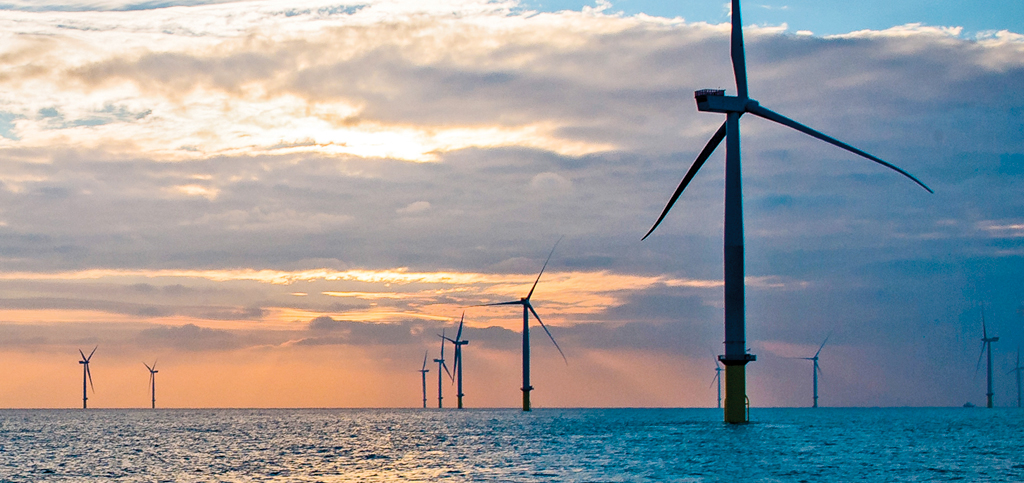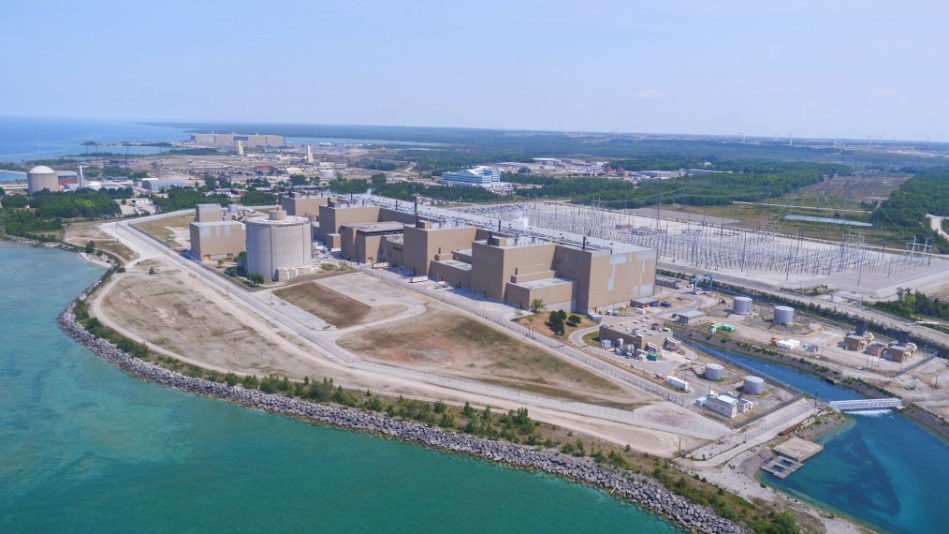People don’t seem to believe me when I say that Nuclear would be one of the cheapest ways to switch over to zero-carbon energy. So welcome to another rough and ready math attempt.
We’ll take 3 different scenarios: nuclear, solar PV and off-shore wind as these seem to be the most common grid-scale applications of these technologies.

First, let’s do Solar PV. The current largest Solar PV facility is the Tengger desert facility in China with 1500+ MW of solar nameplate capacity. The largest facility I could find a price for however is the Solar Star I farm in California with 579 MW nameplate capacity and a bond price of $1 Billion USD for that price, it seems like it costs about $1.72 per Watt. It covers 13 square km.

For offshore wind, there is the London Array just off the coast of Great Britain, near… North Forland. It has a nameplate capacity of 630 MW and cost 2.2 Billion Euros in 2013 ($3.01 Billion USD 2013) for a price of $4.76 per Watt. It covers an area of 122 square km.

And finally, let us peruse the Bruce Power generating station in Ontario with a whopping 6,288 MW of nameplate capacity. The total cost of construction in 2013 dollars is $27.56 Billion dollars for a price of $4.38 per Watt. It covers an area of 9.38 square km.
So that’s already Way better showing for nuclear than people were expecting wasn’t it, but it does make it seem like nuclear still loses out by A Lot to solar.

Remember that I listed them all as nameplate capacity, which is the total amount of energy they create running at peak power. To figure out how much these facilities actually cost compared to what they produce we have to divide those costs by their capacity factors.
Solar Star I had a capacity factor of 32.8% as of 2017
The London Array is at 39.9% as of 2018
and Bruce Power had 89.0% in 2017
This puts the construction cost per unit of generation to $5.24 per Watt for solar PV, $11.92 per Watt for offshore wind… And $4.92 per Watt for nuclear power. And that’s a CANDU facility which is generally thought of to be one of the more expensive forms of nuclear generating station… But it goes to show that for the amount of energy, nuclear is the cheapest form of energy we have. And not just in terms of money. It is also the most space efficient, taking 1.49 km^2 per GW. Compared to Solar Star I taking 22.45 km^2 per GW and the London Array taking 193 km^2 per GW I’d say nuclear is coming out way ahead. I don’t know about you but when I go out to enjoy nature and get away from the city, I’d prefer it not to be covered with solar panels and windmills.

The real competitor to nuclear is fossil fuels. Please compare costs of nuclear in North America to natural gas; and, nuclear in India and China to coal.
Is nuclear doing better than coal or natural gas in several aspects like cost, convenience, versatility, speed of deployment, etc?
Let us compare nuclear & coal in India.
I pay ₹4/kWh ($0.056) and ₹400 ($6) per month for coal electricity. Electricity from new nuclear plant in India (Russian VVER) costs ₹6/kWh ($0.084) wholesale; and, more conventional nuclear may double our electricity bill. Many Indians cannot afford this.
Affordable clean energy solves many global problems.
Even fastest deployment of nuclear Sweden or France cannot beat the deployment rate of coal in a developing country. China & India added coal faster than any other energy source. Providing affordable energy access in developing countries is important for humanitarian goals.
Our family got first electricity connection in 1980s. Till 1990s we got only few hours of electricity. From 1990s to recent years (2010s) we were getting like 18-22 hours and there were regular power cuts during evenings. It is only recently we have almost 24 hour supply. If we consider 1990s-2010s, the time of rapid coal expansion, that is 20 year period. It took coal just 20 years to give us reliable electricity access.
Can nuclear provide electricity access with such speed in a developing country?
LWR needs heavy pressure vessel which only few industrialized nations can build. CANDU/PHWR needs tons heavy water which also takes lot of energy to make. We need reactors that are easy to build for rapid nuclear capacity expansion and affordable energy.
LikeLiked by 1 person
I really like this comment. Because you are right. Developing countries very likely cannot build nuclear capacity on their own as quickly as they can with coal or gas. Now whether or not it can’t be done with cooperation from more developed nations I honestly don’t know but am hopeful. Now as to your comment about cheap renewables I specifically tried to avoid finding pricing information that did not include subsidies because the disparities between subsidies that are for nuclear, fossil fuels, and renewables are substantial. I used non subsidized numbers to provide as equivalent a comparison as possible. Cause subsidies are a horrible Byzantine mess.
LikeLiked by 1 person
Shit, mistyped. I meant that I specifically Tried to find non subsidy values for the power plant costs
LikeLike
Renewables do not provide same services that a coal or nuclear plant provides, and they are not cheap. Also, India has 1.3 billion people crammed in a relatively small country. We don’t have spare land needed for solar & wind farms. The main reason India is building renewables is because of cheap financing (low interest rates) offered by foreign governments, the UN, world bank etc. Other reason is show-off. Politicians want to inaugurate renewables. Photos of politicians with shinny solar panels and wind turbines looks good for publicity.
Most of the new coal plants in India are private. Government has only its stakes in coal mining and transportation in India. Coal in India is not subsidized to the extent nuclear or renewables is. Entire nuclear operations which includes nuclear fuel cycle, power plant & financing of nuclear power plant is controlled by Indian government.
Co-operation with developed nations: CANDU is too big for submarines, so there is less tech-transfer restrictions, so India has these reactors. LWRs are closely associated with submarine tech. It is difficult to transfer LWR and associated technologies like uranium enrichment and pressure vessel forging to developing countries.
(Me: I generally do not support renewables. Wind & Solar are very inefficient/ineffective when we need large scale affordable energy. But, I support concentrating solar only because it is similar to molten salt reactors.)
LikeLike
Gen-3+ (Passive safety) Nuclear in countries who have no experience in operating nuclear plants:
Barakah (APR1400) costs $4,535/kW or ($24.4billion/(4*1345MW))
Rooppur (VVER1200)- $5856/kW or ($12.65billion/(2*1080))
Gen-3 nuclear in India (Not Gen3+):
Kudankulam (VVER1000)- $2162/kW or ($7.93billion/4*917MW)
Private coal plant near a coal mine:
Sasan Ultra Mega Power Project, India (Coal plant+mine) costs $1010/kW or ($4billion/3960MW)
LikeLike
I think these comparisons are still misleading because the nuclear can be generalized without incurring cost increases whereas the solar cannot be generalized without pricing in either massive overbuild, storage, or gas. and the goal is to get rid of the gas. I guess the point is that solar is misleadingly cheap even after you account for capacity factor and that particular capacity factor is about as high as solar can get. In Germany, solar CF often is below 2 % in winter. The only way to compensate system wide would be storage in quantities which beggar speculation.
LikeLike
yeah, I agree that this comparison is horrendously bare bones. But even giving wind and solar huge benefits of the doubt, nuclear still comes out ahead.
LikeLike
achalhp points to the real challenge. We have to get nuclear down in cost to match coal in the developing world. We are aiming for exactly that. Check out Thorconpower.com.
LikeLike